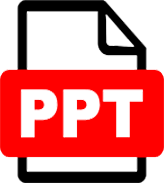- Programme Code 020
- Course Code BCA-105
- Course TypeCore
- Programme Bachelor's in Computer Application
- Course Name Fundamentals of Computer and IT
- L - T/P - Credits 3 - 1 - 4
- Course Outcome
- CO1 Describe computer with its characteristics, its usage, limitations and benefits, Computer Memories and its type, Software and its type
- CO2 Acquire knowledge about Number Systems, various computer languages and operating system DOS
- CO3 Attain skills in Application Software used for word processing, spreadsheet and presentation
- CO4 Understand network fundamentals and various communication network, Advance trends in IT
- Tecniatv Playlist linkhttps://www.youtube.com/playlist?list=PLxgxc3YLYEqMr- qun8qjrN_e3Fn2hoGGA
# As per Scheme & Syllabus Of Guru Gobind Singh Indraprastha University, New Delhi 2022-23 Onwards.
BCA 105 Course Plan was last modified: April 14th, 2023 by admin


